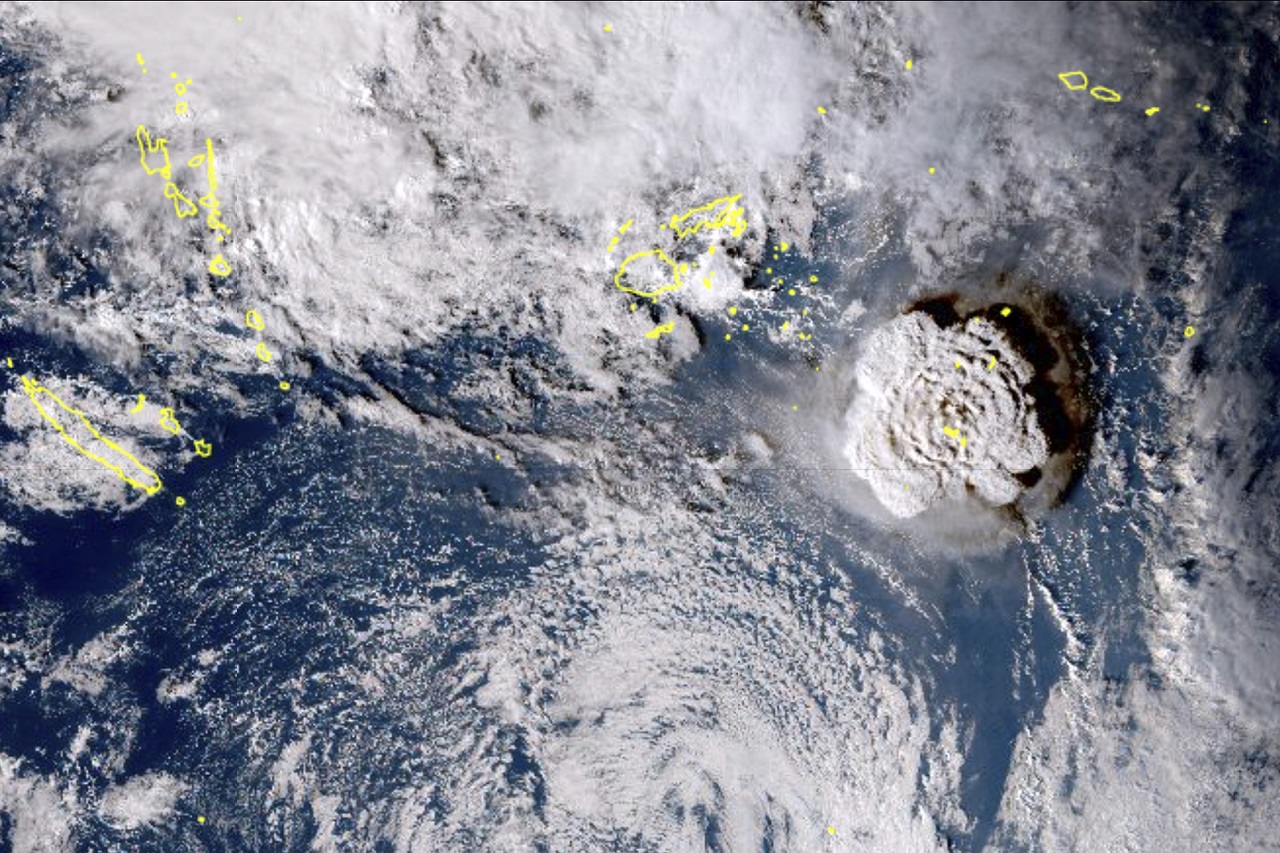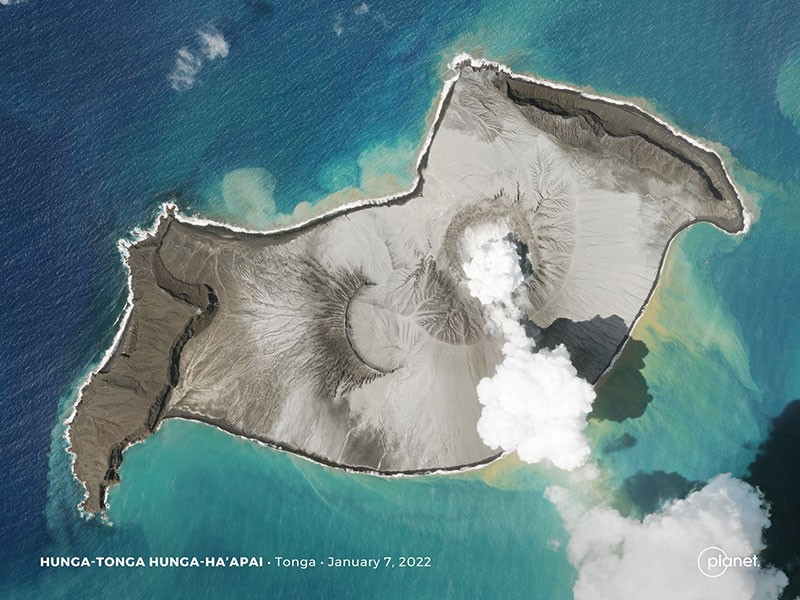
The Tonga volcanic eruption in January 2022 is the strongest in about 140 years. Here’s more on the record atmospheric explosion.
Such an explosion in the atmosphere was undocumented in the “modern geophysical record”

The last biggest volcanic eruption to take place was the eruption of Krakatau in 1883. From the recent Tonga volcanic eruption, researchers found waves similar to that of Krakatau. A new study also revealed that such an explosion in the atmosphere was undocumented in the “modern geophysical record”. It produced globally-detected infrasound up to 10,000 km away and also caused “ionospheric perturbations” as seismometers worldwide recorded pure seismic and air-to-ground coupled waves.
According to experts, it was bigger than any volcanic event in the 20th century and the atom bomb tests conducted after World War II. “Tonga was a truly global event, just as Krakatau was, but we’ve now got all these geophysical observation systems and they recorded something that was really unprecedented in the modern data,” stated Dr. Robin Matoza. Dr. Matoza is the lead author of one of the studies and a researcher at the University of California.
The explosion also hampered the relief efforts

The volcanic eruption from January 15 also created an “umbrella cloud” about 30 km above sea level and produced a wide range of atmospheric waves. Research reveals audible sound was common across Alaska, located about 10,000 km away from the location. The study, published in Science journal also notes the destruction of undersea regions.
Additionally, the carnage also hampered the relief efforts of about 100,000 people as backup satellite links were not highly successful due to a patchy broadband connection.
The 80 km-long undersea cable’s destruction ensured the disconnection of the Pacific island nation for weeks as tsunamis and shockwaves following the eruption continued causing havoc. About 55 km of the undersea cable was also lost in the seabed.






